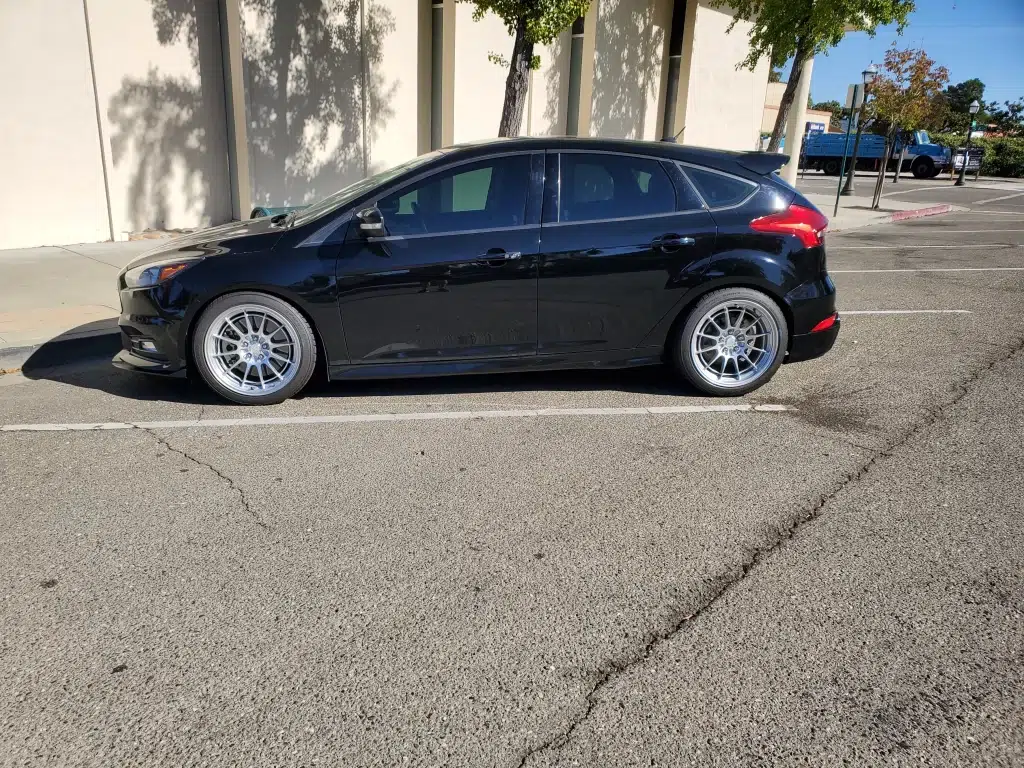
Table of contents
Introduction
When I first bought my 2001 Acura CL, there was one unsettling thing I knew I had to fix: the terrible ride height. Being new to car mods, I had to find out how to lower a car. I was overwhelmed with the options of air suspension, coilovers, lowering springs, or being an absolute heathen and using an angle grinder to cut the springs. Fortunately, I dodged the bullet of cutting my own springs and purchased a slightly used set of H&R lowering springs. It brought the ride height down about an inch all around. This simple but effective mod produced a better stance for the car and made the car have a better grip feel.
Fast forward to owning a Ford Focus ST, I immediately used my understanding of how to lower a car and applied it to this platform. Combining mountune lowering springs with a new set of shocks, I got an awesome ride height, improved handling, and better ride feel.
But how do you avoid drowning amongst the limitless options of lowering a car? Luckily, I am compiling the how-to’s of lowering a car in this guide just for you! Follow along and learn about what you need to know to lower a car’s ride height.
How To Lower A Car
When lowering a car’s ride height, you have to consider what the purpose is. Are you lowering the ride height strictly for looks? Or is this going to be for performance? Based on your answer to those questions, you will dive into the different options of lowering a car:
- Cutting The Springs
- Install Lowering Springs
- Install Coil-Over Suspension
- Install Air Suspension
If you don’t have a plan or goal in mind when modifying your car, I would figure that out first. I would hate for you to go and slam a car to the ground with cheap coilover suspension just to realize later you want to put it on air suspension. Now that we have the foundation of options established, let’s go into what each option is and how it may work for you.
Cut The Springs
Cutting springs is the ultimate budget method to lowering a car. The usual steps include going to your local auto parts store to rent cheap spring compressors, take out your stock suspension, remove the springs, cut them, then reinstall them and hope the ride height is equally lowered. This method is cheap and is used for those just wanting to lower their car. However, cutting the springs will greatly affect the ride quality a.k.a it will be unbearable to drive. Personally, I’d avoid this method since I actually want to enjoy driving my car. At the end of the day, its your car and it’s your call. I urge you to consider the possible safety concerns of cutting your car’s springs. Cars are meant to be enjoyed, not to be potential death traps for the owners.
Lowering Springs
Lowering springs are the widely accepted form of lowering a car. These are springs engineered at a lower-than-stock ride height. Not only will they provide a lower ride height, but the lowering springs can be stiffer than stock to provide better handling characteristics. Frequently, car enthusiasts will combine lowering springs with performance shocks and struts. For example, a race-proven set up was H&R springs on Koni Yellow Adjustable Shocks. This specific has hours of track data proving it is a very capable setup. Lowering springs will typically run between $150-$300 depending on brand and materials.
Coil-Over Suspension
Coil-over suspension is a complete kit consisting of lowered springs and shocks built for them. These kits provide a wide range of adjustability. Lower end coil-over kits often only lower ride height, whereas top tier coil-overs will provide adjustable height, damping, rebound, and more. The higher end kits give you this adjustability to finely tune your suspension to your needs. You can find the budget kits (that I would trust) around $500 for a full set. Coil-over suspension kits with more adjustability can range from $750 up to $4000 depending on the options. If you don’t know how to lower a car with coil-over suspension, Chris Fix has a great breakdown of the installation process.
Air Suspension
Air suspension or air bags are a highly adjustable and electronically controlled suspension system. The air bag setup uses an air compressor to raise or lower the vehicle’s suspension. Amongst the car community, you may hear people on air suspension refer to lowering the car as “airring out”. This is the most expensive option as a proper air suspension setup is very involved. The result is a highly adjustable setup with great ride quality. Also, air suspension has the ability to prevent your car from scraping on the road. Simply press a button and your ride height raises. Cost wise, this is the most expensive option. A quality kit starts around $3000 and only goes up from there. In my opinion, air suspension is great for a daily driver or show car.
If you can’t fully decide between coil-overs or air suspension, check out our article breaking down the pros and cons of each setup.

What Should I Know Before Lowering A Car?
#1 If you do not know how to lower a car, find someone who does
While car suspension it itself is not the most complicated thing to learn, the process is still daunting. Like any car mods, we recommend seeking out a professional that knows how to lower a car.
#2 Not all suspension parts are built the same
Like many other car mods, quality should come first. Too often I see enthusiasts purchase cheap coil-over kits that they got off of eBay to lower their car. The downside to this is they complain about the crappy ride quality. If you are brand new to the modified car world, stick to brands like Eibach, Koni, KW, Fortune Auto, or Tein. These brands have years of research and development as well as racing experience. This will ensure you are getting the best parts for your car. Fortunately, these brands cover a wide range of vehicles so finding something for your car should be easy!
#3 Make sure your wheels and tires won’t be an issue
With lowering the suspension comes the potential issue of tires rubbing the fenders. Wheel offset, tire size, and ride height is the biggest factor in if the tires will rub. Personally, I consult forums to see what people have done before to ensure I don’t run into issues. If you need to overcome rubbing, consider raising the ride height, rolling your fenders, or getting new wheels or tires. If you need wheel ideas for your build, we got you covered with our list of the best aftermarket wheels under $1500.
#4 After lowering a car, you need to get an alignment done
When lowering a car, you are changing the geometry of the suspension. This adjustment to the car’s suspension affects the caster, camber, and other parts of the suspension that must be aligned. Once you lower the ride height, take it to a reputable shop to get an alignment. This will only improve your ride quality and prevent premature wear from parts.
Conclusion
When figuring out how to lower a car, you need to decide on if it is for performance or for show. Regardless of the path you take, consider the cost, the method, and the application of your aftermarket suspension. If you choose to lower a car, make sure your wheels and tires won’t cause a fitment issue. If you are in need of guidance on where to purchase aftermarket suspension or need examples of your car, visit Fitment Industries! The gallery section will provide you with examples of your car with various suspension and wheel specs so you can see what works.
Enjoy the modifying process and feel free to DM us on socials to show off your newly lowered car! Contact us on our website, Pinterest, or Instagram!
AFFILIATE DISCLAIMER
Powershift Auto is a participant in the Fitment Industries Street Team Program, an affiliate advertising program designed to provide a means for sites to earn advertising fees by advertising and linking to fitmentindustries.com.
When I link to products and services, those links may be affiliate links. If you click on any of those affiliate links and make a purchase within a certain time frame, I’ll earn a small commission. The commission is paid by the retailers, at no cost to you.
I’m careful to link to products and retailers that I have or would use myself and recommend. Money earned keeps Powershift Auto running and allows it to continue to grow. Thank you for your support.

Keep up with the latest articles, content, and special offerings by signing up for our email newsletter!
